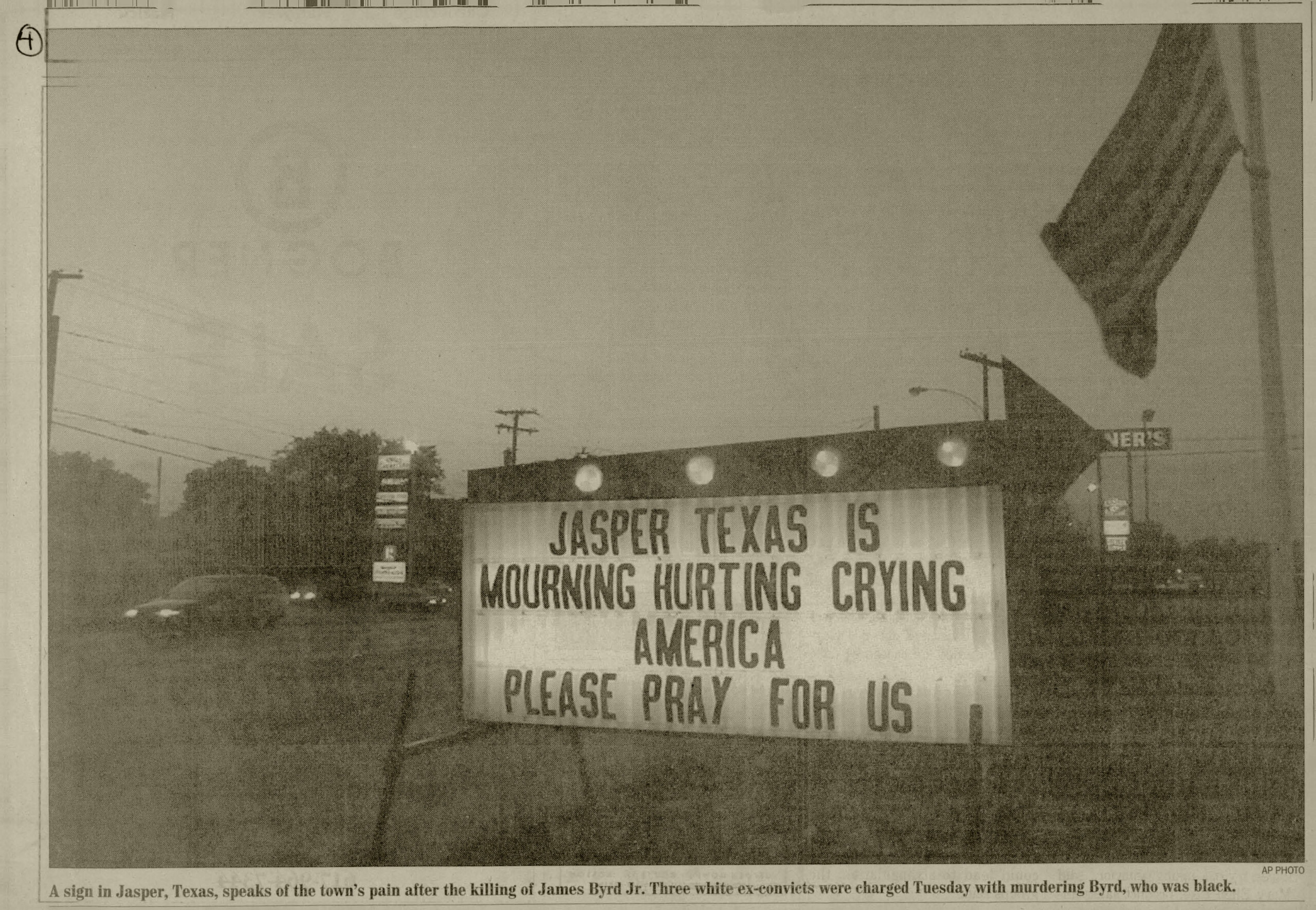
For Sud, Chantal Akerman traveled to the American South after having discovered that a black man named James Byrd Jr. was gruesomely murdered by three white men. Her lingering gaze unsettles the seemingly ordinary landscape, revealing the violent history that hides in the silence of the South.
EN
“Sud was shot in the American South, and its strength is the dialectic between past and present. Chantal went down there, attracted by Faulkner and Baldwin. The film begins gently, almost peacefully: people talk about how everything seems better now than it used to be. But little by little, in this quiet landscape, you start to feel anxiety. The strident sound of insects becomes threatening, and so do the trees. We begin to hear about slavery and lynching, and then, as the tension grows powerful, we start to question the placidity we saw at the beginning.
Chantal and I often listened to Billie Holiday’s Strange Fruit during the editing process. We even considered putting the song in the film. Ultimately, we didn’t even try. But we put in trees – one, two, three of them. When you look at them in the film, you can’t help thinking about hangings. And the shot of prisoners working in a cotton field conjures up the memory of slavery. What guided me during the construction of Sud was Chantal’s extreme attention to the present. We never show or describe the past, but it is dredged up by the present.
Chantal hadn’t planned for the framework of Sud to be the story of James Byrd Jr.’s lynching by white supremacists. Before leaving for what was supposed to be a location-scouting trip, she was only talking about the area’s oppressive landscape and silence. She was practically obsessed. Silence and crickets. But the day she arrived in Jasper, Texas, happened to be the commemoration of James Byrd Jr.’s murder. This became a central sequence in the film.
Sud is not simply a film about the lynching and enslavement of black people in the United States. It’s about the violence of the world and the way history haunts landscapes to become a part of our gaze. By going beyond the categories of good and evil and allowing a space of dignity for each character, including those who speak the most horrible things, the film shakes us directly, questioning our own way of looking at the other and the whole of humanity.”
Claire Atherton1
“Sud, then, like its predecessor D'Est, is an archaeology of suffering, a memory-space where shadows of the past haunt the deceptively anodyne quotidian. The two works attempt to come to terms with horrific events whilst at the same time acknowledging the difficulty of finding an appropriate language with which to express the horror. [...] The film's last scene, a seven-minute-long tracking shot of the road on which the victim [James Byrd Jr.] was dragged to death, is exemplary of her more oblique, distilled approach to the cinematic image. The camera, fixed to the back of a car, meticulously scans the stretch of road and its surrounding countryside. Blue circles drawn on the tarmac by the police to circumscribe the places where personal possessions and body parts of the victim were found come into sight. Though not in any way graphic, this is arguably the most violent scene in Akerman's entire oeuvre. For spectators, the horror is all the more intense because our imagination has to supply the images of suffering the director withholds from view. Ultimately, invisibility becomes the most powerful strategy in a film that, from the outset, sets up a tension between what is and what isn't shown or said and which actively implicates the spectator in its summoning of the dead.”
Marion Schmid2
- 1Claire Atherton, “Living Matter,” Sabzian, 16 December 2020.
- 2Marion Schmid, Chantal Akerman (Manchester: Manchester University Press, 2010), 112-113.
FR
“Il faut aussi pour mieux percevoir ce Sud, peu à peu rencontrer des gens, des gens qui parlent ou se taisent, des gens qui parlent pour ne rien dire et disent parfois tant, des gens qui parlent pour dire et en disent parfois trop.”
Chantal Akerman1
“Le silence du film est le silence de l’amnésie ou de l’impossibilité de dire – impossibilité qui se retrouve chez un Faulkner où les circonvolutions de l’écriture mettent en scène, en fait, l’incapacité du parler de. Comme l’exprime Addie Bundren dans As I Lay Dying, ‘words are no good; words dont ever fit what they are trying to say at.’ Il ne s’agit donc pas d’un documentaire sur le Sud des Etats-Unis, d’une excursion européenne dans un territoire américain exotique, mais d’une cartographie de la mémoire: ‘J’ai aussi eu envie d’aller voir là-bas ... si ce paysage garde les traces ou le souvenir même de quelque chose d’autre que leur propre beauté.’ Sud laisse la mémoire se faire, dessine un espace où la mémoire peut évoluer, espace de mémoire et mémoire de l’espace se rencontrent.”
Marie Liénard2
- 1Chantal Akerman, “Notes of intent”, from the archives of Chantal Akerman and Paradise Films, Fondation Chantal Akerman.
- 2Marie Liénard, “Sud de Chantal Akerman ou une histoire de territoire et de terre: le Sud comme espace de mémoire,” Caliban, 19, 2006: 131-138.


 ,
, 